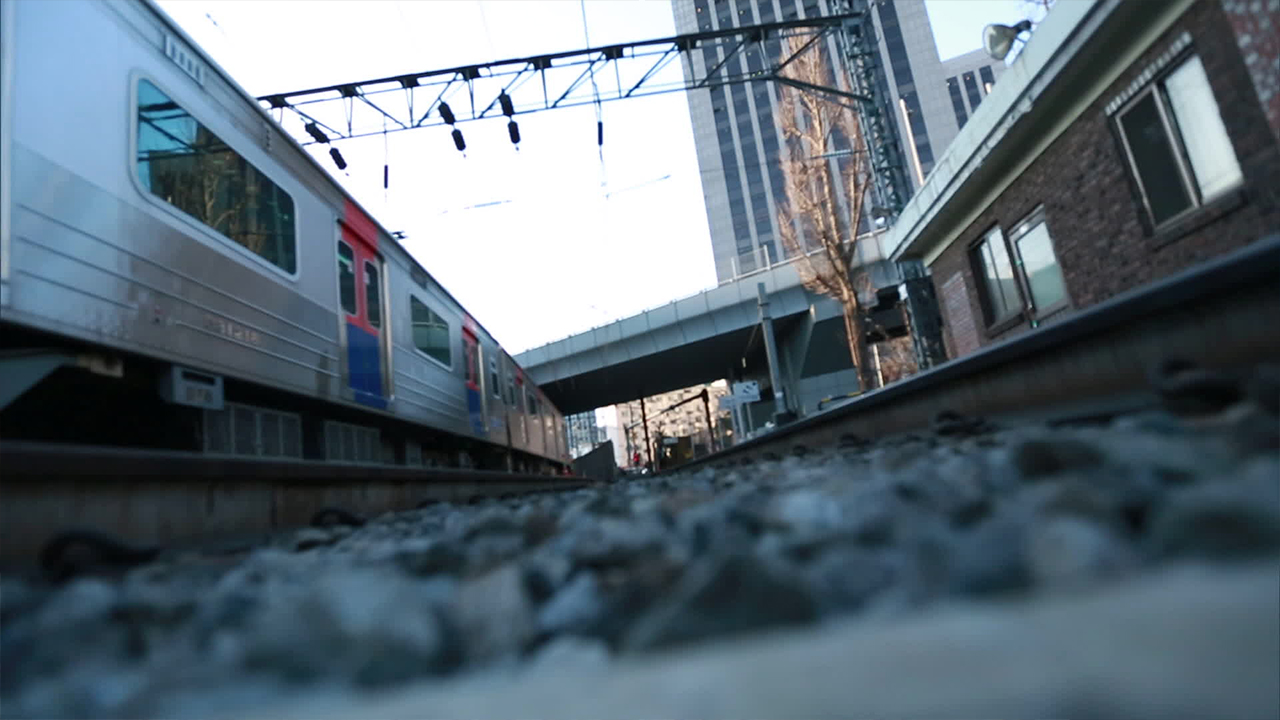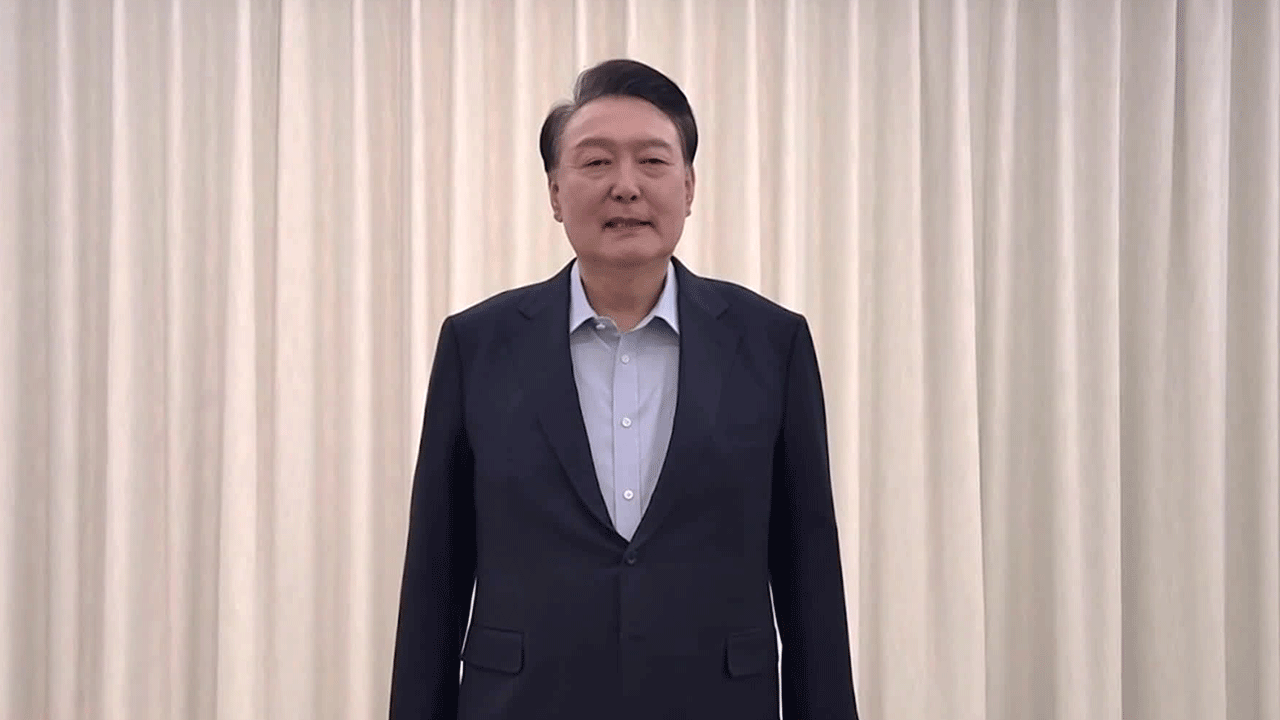Seoul plans to move 94% of its above ground railway sections underground
입력 2024.10.24 (00:22)
읽어주기 기능은 크롬기반의
브라우저에서만 사용하실 수 있습니다.
[Anchor]
Seoul Metropolitan City has decided to move underground a 60-kilometer stretch of elevated railway that runs through the city center.
The plan includes creating large green spaces along the existing tracks and developing the station sites into cultural and commercial facilities.
Kim Min-kyung reports.
[Report]
The elevated railway sections crossing the city of Seoul consist of a total of 6 lines, spanning approximately 71.6 kilometers.
The railway cuts through urban areas, disrupting living spaces and causing noise and vibrations, which inevitably leads to significant inconvenience for residents.
As discussions on putting the railway underground have intensified, Seoul has decided to move underground 67.6 kilometers of the elevated railway, which accounts for 94% of the city’s elevated railway sections.
Through this, the city plans to create large green spaces similar to the Gyeongui Line Forest Trail and 'Yeontral Park,' which were developed after the undergrounding of the Gyeongui Line railway.
[Oh Se-hoon/Mayor of Seoul: "By transforming the upper space into green areas, we will create 1.22 million square meters, which is about 370,000 pyeong of green space."]
The sections for undergrounding will be divided into two main areas centered around Seobinggo Station: 34.7 kilometers around the Gyeongbu Line and 32.9 kilometers around the Gyeongwon Line.
The station sites will be developed into office, commercial, and cultural facilities, which will help secure funding for the project.
The city of Seoul estimates the total cost of the undergrounding project to be 25.6 trillion won.
The profits from developing the upper space of the stations are expected to reach 31 trillion won.
[Jo Nam-jun/Head of Urban Space Headquarters, Seoul: "We have set the project costs as high as possible and the development profits as conservatively low, so we do not expect significant deviations."]
The city plans to propose this plan to the Ministry of Land, Infrastructure and Transport to select leading project sites.
This is KBS News, Kim Min-kyung.
Seoul Metropolitan City has decided to move underground a 60-kilometer stretch of elevated railway that runs through the city center.
The plan includes creating large green spaces along the existing tracks and developing the station sites into cultural and commercial facilities.
Kim Min-kyung reports.
[Report]
The elevated railway sections crossing the city of Seoul consist of a total of 6 lines, spanning approximately 71.6 kilometers.
The railway cuts through urban areas, disrupting living spaces and causing noise and vibrations, which inevitably leads to significant inconvenience for residents.
As discussions on putting the railway underground have intensified, Seoul has decided to move underground 67.6 kilometers of the elevated railway, which accounts for 94% of the city’s elevated railway sections.
Through this, the city plans to create large green spaces similar to the Gyeongui Line Forest Trail and 'Yeontral Park,' which were developed after the undergrounding of the Gyeongui Line railway.
[Oh Se-hoon/Mayor of Seoul: "By transforming the upper space into green areas, we will create 1.22 million square meters, which is about 370,000 pyeong of green space."]
The sections for undergrounding will be divided into two main areas centered around Seobinggo Station: 34.7 kilometers around the Gyeongbu Line and 32.9 kilometers around the Gyeongwon Line.
The station sites will be developed into office, commercial, and cultural facilities, which will help secure funding for the project.
The city of Seoul estimates the total cost of the undergrounding project to be 25.6 trillion won.
The profits from developing the upper space of the stations are expected to reach 31 trillion won.
[Jo Nam-jun/Head of Urban Space Headquarters, Seoul: "We have set the project costs as high as possible and the development profits as conservatively low, so we do not expect significant deviations."]
The city plans to propose this plan to the Ministry of Land, Infrastructure and Transport to select leading project sites.
This is KBS News, Kim Min-kyung.
■ 제보하기
▷ 카카오톡 : 'KBS제보' 검색, 채널 추가
▷ 전화 : 02-781-1234, 4444
▷ 이메일 : kbs1234@kbs.co.kr
▷ 유튜브, 네이버, 카카오에서도 KBS뉴스를 구독해주세요!
- Seoul plans to move 94% of its above ground railway sections underground
-
- 입력 2024-10-24 00:22:55

[Anchor]
Seoul Metropolitan City has decided to move underground a 60-kilometer stretch of elevated railway that runs through the city center.
The plan includes creating large green spaces along the existing tracks and developing the station sites into cultural and commercial facilities.
Kim Min-kyung reports.
[Report]
The elevated railway sections crossing the city of Seoul consist of a total of 6 lines, spanning approximately 71.6 kilometers.
The railway cuts through urban areas, disrupting living spaces and causing noise and vibrations, which inevitably leads to significant inconvenience for residents.
As discussions on putting the railway underground have intensified, Seoul has decided to move underground 67.6 kilometers of the elevated railway, which accounts for 94% of the city’s elevated railway sections.
Through this, the city plans to create large green spaces similar to the Gyeongui Line Forest Trail and 'Yeontral Park,' which were developed after the undergrounding of the Gyeongui Line railway.
[Oh Se-hoon/Mayor of Seoul: "By transforming the upper space into green areas, we will create 1.22 million square meters, which is about 370,000 pyeong of green space."]
The sections for undergrounding will be divided into two main areas centered around Seobinggo Station: 34.7 kilometers around the Gyeongbu Line and 32.9 kilometers around the Gyeongwon Line.
The station sites will be developed into office, commercial, and cultural facilities, which will help secure funding for the project.
The city of Seoul estimates the total cost of the undergrounding project to be 25.6 trillion won.
The profits from developing the upper space of the stations are expected to reach 31 trillion won.
[Jo Nam-jun/Head of Urban Space Headquarters, Seoul: "We have set the project costs as high as possible and the development profits as conservatively low, so we do not expect significant deviations."]
The city plans to propose this plan to the Ministry of Land, Infrastructure and Transport to select leading project sites.
This is KBS News, Kim Min-kyung.
Seoul Metropolitan City has decided to move underground a 60-kilometer stretch of elevated railway that runs through the city center.
The plan includes creating large green spaces along the existing tracks and developing the station sites into cultural and commercial facilities.
Kim Min-kyung reports.
[Report]
The elevated railway sections crossing the city of Seoul consist of a total of 6 lines, spanning approximately 71.6 kilometers.
The railway cuts through urban areas, disrupting living spaces and causing noise and vibrations, which inevitably leads to significant inconvenience for residents.
As discussions on putting the railway underground have intensified, Seoul has decided to move underground 67.6 kilometers of the elevated railway, which accounts for 94% of the city’s elevated railway sections.
Through this, the city plans to create large green spaces similar to the Gyeongui Line Forest Trail and 'Yeontral Park,' which were developed after the undergrounding of the Gyeongui Line railway.
[Oh Se-hoon/Mayor of Seoul: "By transforming the upper space into green areas, we will create 1.22 million square meters, which is about 370,000 pyeong of green space."]
The sections for undergrounding will be divided into two main areas centered around Seobinggo Station: 34.7 kilometers around the Gyeongbu Line and 32.9 kilometers around the Gyeongwon Line.
The station sites will be developed into office, commercial, and cultural facilities, which will help secure funding for the project.
The city of Seoul estimates the total cost of the undergrounding project to be 25.6 trillion won.
The profits from developing the upper space of the stations are expected to reach 31 trillion won.
[Jo Nam-jun/Head of Urban Space Headquarters, Seoul: "We have set the project costs as high as possible and the development profits as conservatively low, so we do not expect significant deviations."]
The city plans to propose this plan to the Ministry of Land, Infrastructure and Transport to select leading project sites.
This is KBS News, Kim Min-kyung.
-
-

김민경 기자 mkdream@kbs.co.kr
김민경 기자의 기사 모음
-
이 기사가 좋으셨다면
-
좋아요
0
-
응원해요
0
-
후속 원해요
0















이 기사에 대한 의견을 남겨주세요.